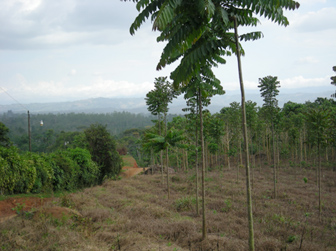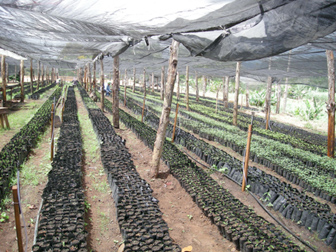Deforestation in the Brazilian Amazon is a timeless issue that has been propounded into the public knowledge sphere since I was a child. Always eager to learn the actuality of environmental propaganda, I have been tracking reforestation practices since 2001. I first ground-truthed the realities of sustainable development in Costa Rica the summer after my freshman year at Vassar. We visited various national parks throughout the country and had the opportunity to conduct interviews with locals surrounding Monteverde on the impacts of ecotourism. This program was conducted through the School for Field Studies. My impressions were of surprise and delight at how eco-conscious Ticos appeared to be.
I continued my exploration of rainforest issues studying for a semester in the Atherton Tablelands of northeast Queensland. The School for Field Studies works alongside many of the local reforestation organizations. These are primarily composed of retired people that are concerned about their local resources. The small band of rainforest along the eastern shore of Australia is actually an important locale for reforestation experiments. While I was there we evaluated the reforestation plots of the previous groups. Due to drought there was an extremely high mortality rate. While measuring was good practice, the plot could hardly be considered a successful reforestation project.

|
It was then that I began to realize the challenges that are presented in reforesting an area. Reforestation is expensive, difficult to plan, and even harder to execute. Success is subject to weather, pests, weeds, and continued maintenance. It is time consuming and more often than not the opportunity cost to reforest is much higher than the current land use.
More fundamental than the actual act of reforestation is defining how to characterize reforestation. It is not just a matter of trees species but of environmental ethics. Deciding what trees species to plant lead one back to the question of what is the reason for the reforestation? If an area is being reforested for the purpose of preservation of biological diversity then reforestation with local, native species may be appropriate. More recently we have seen that large reforestation projects are taking place under the guise of the UNFCCC Clean Development Mechanism (CDM) Afforestation/Reforestation modality as well as under the Voluntary Carbon Market. The purpose of these projects is to create large banks of carbon offsets. The type of trees planted then become important in terms of which species absorb the most carbon and which are the fastest growing species.
Many commercial plantations are considered reforestation. Often times fast growing, non-native plants like Teak and Eucalyptus are used. Environmental NGOs as well as indigenous groups have historically been opposed to such schemes because of the adverse effects on the surrounding environment as well as the “unsustainability” of the use of monocultures. Other issues with the exportation of wood are the costs of the wood and the ability to export native species outside of the country.
Under the CDM we have seen reforestation projects defined as commercial plantations, agroforestry systems, and natural regeneration.

|
There are many social issues that arise as well in reforestation practices. Land tenure is by far the greatest. The issue of land tenure is not a new one, particularly in Latin America, yet time and time again it is a constraint in the success of reforestation projects. I often have a difficult time understanding why a massive project has yet to be conceived to directly assign land rights to people throughout the developing world.
Another ethical issue that has arisen is what the role that genetically modified trees should play in reforestation efforts. This issue currently resides at the Convention for Biological Diversity (CBD). While the CBD has taken a stance against the use of genetically modified trees, they are already being used in experimental plots in China.
Taking all of these factors into account then the question then becomes, is reforestation then a hopeless case?
On international environmental front, afforestation and reforestation projects have taken the back seat to Reduced Emissions from Degradation and Deforestation (REDD). This is not surprisingly; it is certainly easier to pay people not to deforest than it is to plan large-scale reforestation of previously degraded lands. I believe that all levels of reforestation are possible if planners utilize best practices as tools and cater them to their particular situations. While this is much easier said than done all to often common roadblocks (ie. land tenure) are overlooked until the implementation of a project has begun. While reforestation is a large piece of the puzzle to reducing carbon emissions, careful planning as well as continuous evaluation can ensure increased success for these projects.